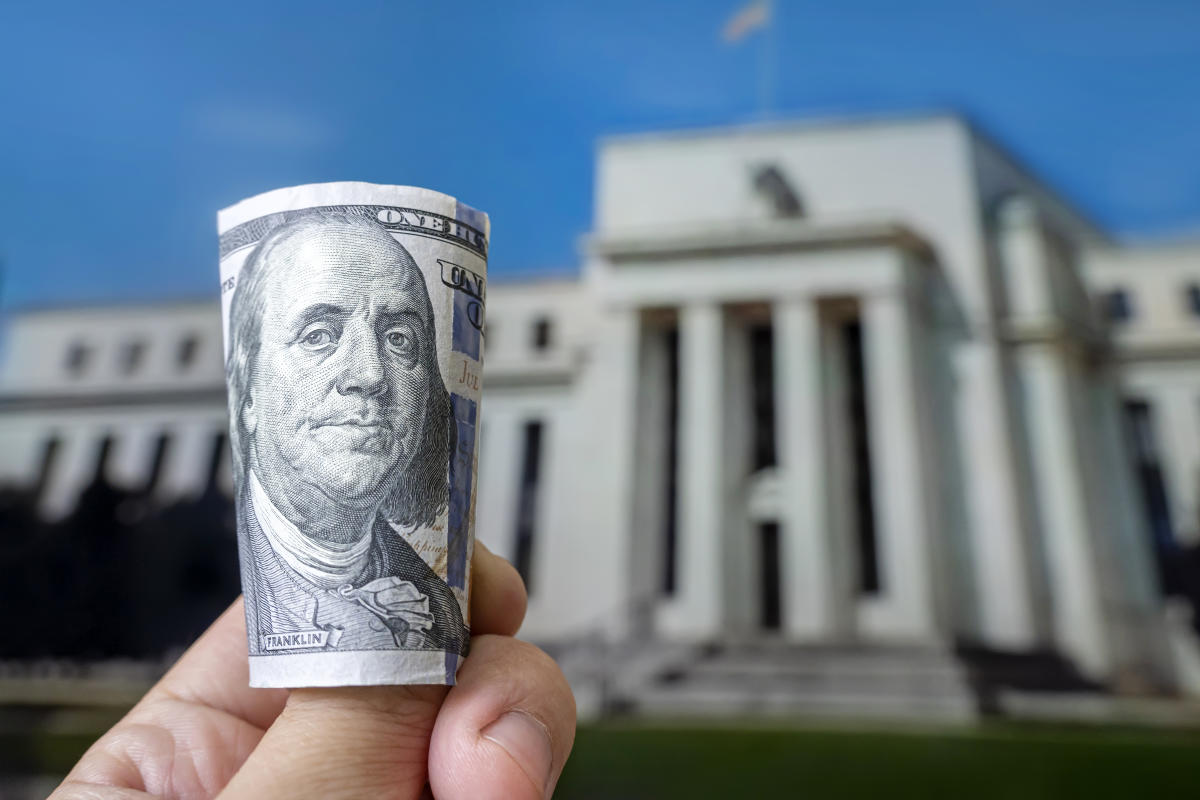You might think of the Federal Reserve as a bank to banks. It holds bank deposits, lends money to financial institutions, and facilitates the process for banks to borrow funds from each other.
However, the Federal Reserve is much more than that. The Federal Reserve ensures the smooth operation of the banking system and guides the nation’s economy by managing U.S. currency and by steering interest rates.
Learn more: Federal Reserve rate predictions
In this article:
The Federal Reserve System, or the Fed, has five main responsibilities:
-
Monitor and attempt to guide the U.S. economy. The Fed establishes an interest rate used by banks for ultra-short-term loans. Called the federal funds rate, it influences the rates financial institutions charge to consumers. This “monetary policy” can slowly nudge consumer prices higher or lower. At its last meeting on Dec. 18, the Fed cut short-term interest rates again by 0.25%.
-
Maintains a stable financial system. The Fed monitors the banking system, looking to minimize widespread risk.
-
Monitors the health of U.S. banks to manage the risk of individual financial institution failures.
-
Facilitates a national payment system. The Fed enables the transfer of massive sums of money between financial institutions as well as the government.
-
Serves to enhance consumer protection and community economic development by supervising and regulating the U.S. financial framework.
Learn more: How the Fed affects student loan interest rates
The Federal Reserve is often called the U.S. “central bank.” In fact, most countries have central banks. In Canada, it’s the Bank of Canada. In the United Kingdom, it’s the Bank of England.
The purpose of all central banks is the same: to monitor and ensure the stability of financial systems — including the banks, currencies, and economies of different countries or regions.
Who owns the Federal Reserve? No one owns the Federal Reserve. The Fed was established by the Federal Reserve Act in 1913 to be the country’s central bank. It is an independent government agency accountable to Congress and U.S. citizens.
Learn more: How much control does the president have over the Fed and interest rates?
Even though it is referred to as the central bank of the United States, the Federal Reserve System, or Fed, actually consists of 12 districts, each with its own reserve bank. Each Federal Reserve district has a nine-member board of directors. Six are elected by commercial private banks within each district, and three are voted on by the Fed’s Board of Governors.
Each regional reserve bank helps facilitate funds transfers between banks and the other districts and researches economic conditions within its area, which helps to inform the Fed’s monetary policy.
The 12 districts are Boston, New York, Philadelphia, Cleveland, Richmond, Atlanta, Chicago, St. Louis, Minneapolis, Kansas City, Dallas, and San Francisco.
Learn more: When is the Fed’s next meeting?
The Federal Open Market Committee, or FOMC, is the arm of the Fed most often in the news. As Chair of the Board of Governors, Jerome Powell is the most visible of the dozen members of the FOMC.
The FOMC meets at least eight times a year to set the nation’s monetary policy, which includes:
-
Determining the federal funds rate, as mentioned above. That’s the interest rate charged to banks for overnight loans.
-
Setting a discount rate, which is interest charged to financial institutions that borrow funds from the Fed.
-
Buying and selling securities held in its own portfolio.
-
Determining reserve funds requirements for banks, if any.
The Fed also uses other tools to meet its mandate to promote the nation’s economic stability, which can be explored on the Fed’s website.
Read more: What the Fed rate decision means for bank accounts, CDs, loans, and credit cards
When the Fed adjusts the federal funds rate, the impact seeps throughout the domestic financial system, moving — to some degree or another — short- and long-term interest rates, consumer prices, credit availability, and much more.
Dig deeper: How the Federal Reserve rate decision affects mortgage rates
The Board of Governors is the Fed’s supervisory body. The seven members are nominated by the President of the United States and confirmed by the U.S. Senate. Each member holds a 14-year term. The Federal Reserve System is accountable to Congress.
Individuals can not have accounts with the Federal Reserve, but in a way, the money in the Fed is ours. That’s because financial institutions and the government itself hold cash, checks, wire transfers, and electronic payments in the Fed and use those assets to transfer funds and backstop cash flow. Banks can also borrow money from the Fed.
The Federal Reserve System, including the 12 Reserve Banks, is self-funding. No taxes or federal funding is used to operate the Fed. All profits, after expenses, are transferred to the U.S. Treasury.
The Federal Reserve banks are nonprofit entities with board members appointed by private commercial banks within a Reserve Bank’s geographic district. Commercial banks hold stock in Reserve Banks as a law-mandated prerequisite of membership. However, after dividend payments to stockholders, all net earnings are deposited in the U.S. Treasury.
The Federal Reserve’s main responsibilities are guiding the American economy with monetary policies, minimizing risks to banks and consumers, and overseeing the transfer of funds between banks and the U.S. government.
This article was edited by Laura Grace Tarpley.
EMEA Tribune is not involved in this news article, it is taken from our partners and or from the News Agencies. Copyright and Credit go to the News Agencies, email news@emeatribune.com Follow our WhatsApp verified Channel





